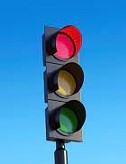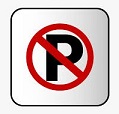


You can get a Parking Ticket for minor traffic violations or infractions. These are also called civil infractions.
Infractions : The examples are :
- Over Speeding
- Running a red light
- Having a broken tail light
- Neglecting to wear a Seat Belt
- Driving on Prohibited Road
- Doing an illegal turn OR Overtaking
- Failure to Yield
- Wrong way Parking
- Driving without valid Insurance
While these traffic violations are not as serious as misdemeanor and felony, they can still affect the environment of the community and cause traffic accidents, injuries and property damage. These offenses are punishable according to the state in which they occur. Traffic Infractions Or Parking Tickets in legal terms are called “ Strict Liability Offenses” . This means that here the criminal intent is not to be proven or looked into. These offenses may lead to a fine OR increased insurance price and are handled by Traffic Court. Parking Tickets will have information about how to take care of the Ticket and which County Court is handling the ticket.
After the court processes the ticket, the court sends you more information in the form of a notice to pay a fine OR appear in the traffic court. The Notice tells you the following:
- What the fine is ( called Bail )
- How to pay the fine OR contest the ticket
- Your due date
You must take care of the ticket by the due date. The notice from the court will explain how to do that. You can also get the information in the courts website. Court name is listed on the ticket and the notice. If you have somehow lost the ticket OR did not get the notice, contact the Court in the County where you got the ticket.
Options to take care of your Parking Ticket
- Pay the Ticket ( Don’t Contest It ). The ticket/notice from the court’s website has specific information about how to pay ( by mail , in person , online ) and you pay by the deadline. Your Traffic Ticket or Notice you got in mail from the court also has information on how to Plead Guilty ( no contest ) and pay the fine . It is also called Bail. If your notice says mandatory appearance, it means you will have to go to the court. If online – You can choose the county where you got the ticket. You can look for by city or by zip code. The conviction will show up on your Driving License record with the DMV ( department of motor vehicle ). It adds points to your driving record and may affect your car insurance, It may be there for 3 to 7 years and your car insurance company may ask you to pay more for insurance and they may also cancel your policy and tell you to find insurance elsewhere. This may be in the case of accident or in addition to your conviction earlier for same offense.
- If you are eligible you can ask to go to Traffic School so that you don’t get a point on your driving record. The notice send to you by court will say if you are eligible for Traffic School. There is a Fee to go to Traffic School. If you complete the time and process in the Traffic School you don’t get the points added to your DMV Record ( If you have a non commercial driving license). Of course there is a condition for this. You are eligible for this if you haven’t gone to traffic school for last 18 months. If you have a commercial driving license, the rules are different. The DMV has the list approved Traffic School.
- If you have a Fix-It Ticket ( Correctable Offense ). You need to just pay the fine and send in proof that you fixed the problem. This is generally the signed certificate of the correction on the back of the Ticket.
- If you can’t afford to pay for your Ticket after the court sets your fine you may ask the court to :
- Lower the amount what you owe – poor financial condition
- Give you more time to pay – if you are sick / not well

In most Jurisdictions there are three classifications of Traffic Violations. These are Infractions, Misdemeanors and Felony. Infractions have already been explained above. The other two are explained below:
Misdemeanor Traffic Violations: These are violations less severe than Felony Offenses. These violations cannot be over looked as they are still serious offenses that can cause public harm. The punishment for these violations can be a heavy fine and 30 days of jail time, depending upon the state you commit this offense, as different states have different traffic rules.

The examples of these violations are:
1. Driving without a License: This is the most common traffic violation. This ensures that all members of the community and property are kept as safe as possible by allowing only those drivers who know how to properly operate a vehicle on the roads in adherence to all traffic laws. The legal age of driving is 16 in all states and 15 for a Learners permit. The learner permits regulations vary by state. Any driver who wishes to drive vehicle legally should adhere to all traffic rules, pass all necessary tests and renew their license according to the renewal schedule of the concerned state. They should always get themselves updated with new traffic rules and always have a valid license.
The most common factors of not having a license are: they never applied for a license, not updated the license after moving to another state, that they had their license revoked or suspended due to prior traffic violation and that they never renewed their license as per renewal schedule in their state. The fine here can be charged upto $500 or jail time upto 30 days.
2. Driving without insurance: This is concerned with both the vehicle Insurance and the driver Insurance. Again the rules are different in different states. Car insurance is set amount paid every month, quarterly or yearly which safeguards your vehicle and the vehicle of someone you may hit, in the event of an accident. Having insurance for unseen traffic accidents can save thousands on just one accident. There are still a handful of states that do not require drivers to have car liability coverage to operate their vehicle. Penalties for driving without insurance in states which require it can range from minor fines, driving license suspension and the vehicle being seized on the spot.
3. DUI ( Driving Under Influence ) Misdemeanor : Less then Felony but still considered a serious offense. It is also termed as OWI (Operating While Intoxicated). Previously different state Jurisdiction had different standard for blood alcohol level to be considered illegal. Now every state lists illegal impairment of DUI as having a blood alcohol level of 0.8 for persons over the age of 21. In some states there is zero tolerance for any alcohol being in the system of a Minor convicted of DUI. Penalties for DUI misdemeanors range from Jail time, heavy fines, probation with community service and drug/alcohol counseling OR all of above. If someone is convicted of DUI his criminal records can also be checked. Unless the crime is convicted the crime is not considered important enough to be entered into criminal background history. In some states the criminal conviction is not considered information which should be available to the Public. So even in the case when you conduct a comprehensive search it is quite possible you may never know anything.
4. DWI ( Driving While Intoxicated ) Misdemeanor : This crime in most of the cases considered as misdemeanor . While many people believe the term to be different from DUI , the term denotes the same offense ; it just depends on how the state processing the crime prefers to refer it . There are basic variables that go into Classifying DWI charge as a Misdemeanor OR Felony. One of the most significant differentiating variables is, if the offender is first-time offense or a repeat offender in their criminal record history. In few states if the offender is convicted third time it becomes felony. In DWI the crime is charged severely and consists of heavy fines, stricter jail time, license suspensions for longer period of time and drug/alcohol counseling. The manner in which the DWI crime offender is arrested and processed are categorized into severe or less severe crime. Another vital difference in misdemeanor and felony is in the area of driving while intoxicated. If the operator of said vehicle inflicted harm to another person and damage to property. If there is a minor injury to another person and little property damage it is misdemeanor and if the person gets killed in accident it becomes felony.
5. Hit and Run Misdemeanor: This is one of the main misdemeanor traffic violations. A hit and run case occurs when an individual operating a vehicle collides into a person or a place of property and fails to stop to check for injuries or damages. Whether there is minor OR major damage does not matter the perpetrator must stop to appraise the situation, contact police, exchange contact information and insurance with the other party. If the owner of the property is not around at the time of accident then it is the duty of the perpetrating individual to make a reasonable effort to notify the owner and give contact information to them through the use of a detailed note about the situation to avoid the hit and run charge. In this violation again the rules may differ from state to state. In this category what is misdemeanor is that when the there is less harm to other person and little property damage. The punishment here can be compensation for property damage, lesser fines, upto 6 months jail time and license suspension for smaller duration of time. Felony is when the other person dies in the accident and there is a huge property damage. The charges in this can be heavy fines, prison time and license suspension.
6. Reckless Driving: This is another common type of misdemeanor traffic violation. This means any type of driving that puts driver and community in danger while operating vehicle. The rules and penalties here may again differ from state to state. The reckless driving constitutes speeding, causing a traffic accident, driving while intoxicated, inattentive driving, driving without headlights, jamming on the brake and any act that disregards traffic laws in that state. This type of offense will show up on person’s criminal record. The punishment here can range from mild to severe. The common penalties are suspension or revocation of driver license, heavy fines, jail term, revocation of parole and deportation.

Felonies: There are majorly three categories for this kind of offense.
- Hit and Run Felony: When it comes to this type of crime it is classified differently according to crime specifics and the jurisdiction it occurs in. The crime of one vehicle driver impacting another driver or person’s property and then running away from the scene or situation without checking or evaluating the situation in hand on the person and property is a perfect example of Hit and Run Felony. The obligation of these perpetrators after such an accident is to stop their vehicle and check on the other person and property involved. They have to exchange contact information with other party and if the owner is not present at the time of offense then the offender has to make serious efforts to contact the owner of the property for the description of the accident and the possible solution to restore the property to its original state. The party should leave a notification at the crime scene. If someone has been injured then driver is under obligation to call an ambulance, police and fire services. Failing to do any of these legal actions will result in this felony charge. The punishment here is severe and the criminal can receive a heavy fine in one state and fine penalties and jail term in another state. When human is involved the least penalty will be a jail time. If the crime results in a death then all states will rule this as a felonious second degree crime punishable as vehicular homicide or involuntary manslaughter.
- Repeat DUI OR Repeat DWI Offense: The first time DUI or DWI offenders carry less fines from US $390 to US $2500 , Jail Term from 5 days to 6 months and License suspension from 3 months to 1 year. In case of Repeat Offenders of DUI/DWI carry heavy fines and strict punishment including jail time, depending on the crime. In felony one of the most commonly charges offense is repeat DUIs and DWIs. Both denote the consuming of alcohol or drugs prior to operating a vehicle, such that the operation of the vehicle may result in injury or death to other is possible. In these two terms the difference lies how the state jurisdiction handling the crime choose to look at. Now the legal limit is 0.8 in all states and zero tolerance in case of minor. Penalties for repeat DUIs and DWIs are considered in most states as felonies, and are called habitual violator with multiple crime status as two times or more. Standard penalties for these offenders include revocation of civil rights (owning a weapon, voting etc. ), high fines ranging from US $ 390 to US $ 25000, vehicle impounding for a period of 10 days to 90 days, extended suspension of driver’s license from 6 months to 10 years, and mandatory jail time from 1 month to 10 years. Due to nature of the offense and specific case the license of defendant may even be permanently revoked. Other punishment include participating in Repeat Offender Programs, Installation of Ignition Interlock Device, going thru Community Services and Yellow License Plate.
- Vehicular Homicide: This offense is the most significant charges of felony traffic violations as it involves a murder of an individual while operating a vehicle. This offense is punishable by the same class penalty even when intent was not a factor. When it comes to vehicular homicide all cases of said crime are considered felonies from all courts, no matter the jurisdiction. This is due to the simple reason that a murder was committed in the act of operating the said vehicle. First degree vehicular homicide is the most serious of felony offenses of this class. In all states a first degree vehicular homicide is committed when an intent to kill was present. First degree is categorized when the following factors are present in the commission of crime: if the driver of the vehicle failed to stop after the collision, drove recklessly, drove under the influence of drugs / alcohol, overtook a school bus, attempting to flee from a law enforcement officer and had previously been declared a habitual violator. Second degree vehicular homicide is referred to as negligent homicide or vehicular manslaughter. This denotes any vehicular murder that occurs as a result of the operation of vehicle without the intent to kill. Most of these crimes occur as a result when another traffic violation is committed. Such as running a red light and killing the traffic crossing your path OR failure to yield at a pedestrian crosswalk and killing the pedestrian. In many state jurisdiction second degree offenses are considered misdemeanors and in other states these same offenses can be considered punishable by felony according to particular traffic rules. One of the most influential factor in the charging, processing and sentencing of first or second degree vehicle murder depends upon which state the homicide was committed in. Another vital variable that can affect sentencing of a crime of this nature is if the operator of the vehicle was intoxicated at the time of the murder. Some state will consider this first degree murder and some state will consider it as second degree murder. The punishment is less severe for first time offender’s and more severe for repeat offender’s. A felony conviction for a first degree homicide in this category can land a defendant in jail for life and in case of second degree homicide the defendant will be given jail term.
Jack Canfield : “Leave sooner, drive slower, live longer”
Take Care & Keep Safe
- Follow Traffic Safety Rules
- Never drive high speed
- Never jump a red light
- Don’t drink and drive
- Keep your Driving License update
- Keep your Motor Insurance update
- Always park in an allotted place
- If given the parking ticket / notice, comply by the due date

